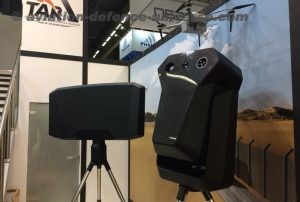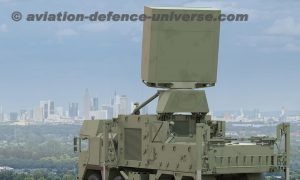
By Lt.Gen VK Saxena
New Delhi. 16 June 2018. International defence and security exhibitions with an year-round frequency and pan-world coverage are the forums which experts watch most keenly as these are the platforms where cutting-edge technologies are first showcased to the world at large. One such event just concluded at Paris , the Eurosatory 2018.
True to the precedent, several niche technologies adapted to combat platforms and covering the entire spectrum of warfare at land sea and air have been showcased at Eurosatory 2018. In the field of ground based air defence, two such technologies are noteworthy. Firstly, M/s Skylock Systems (a part of Avnon Group Isreal) has put out an integrated anti-drone weapon system featuring twin surveillance and tracking solutions (electronic and electro-optical) coupled with a twin-kill solution based on electromagnetic-kill as well as laser-kill, all on a single weapon configuration
Another interesting equipment on a first-time display is a German, four dimensional (4D) radar providing surveillance and tracking solutions to ground based air defence weapon systems (GBADWS). The system is called TMRL 4 D Radar. The dimensions ( two, three…etc) in the radar parlance are the number of target characteristics, ( range, height etc) which a radar is able to capture and present to the operator in a dynamic (real-time changing) mode.
There was a time when sensors and fire control (FC) systems for GBADWS used to be simply two dimensional (2D) providing azimuth (direction or bearing) and range data of the detected targets.
As the technology advanced with time and surface-to-air-missiles (SAMs) entered the scene, altitude data of the target became an essentiality. The same was needed in order to check out whether the target’s predicted kill-zone lies within the altitude ceiling of the SAM proposed to be launched to destroy it.
Initially, separate height-finder radars (e.g the Russian PRV 16 radar with SAM6 Kvadrat weapon system) were deployed and synced with the conventional 2D radars to meet this requirement. Later on, the height finder feature was amalgamated in main frame radars itself.

With this achieved, the world saw the emergence of 3 D radars providing the three vectors of azimuth, range and altitude of the target. India is a proud original equipment manufacturer (OEM) of several 3 D radars. One very potent of them is the 3D Tactical control radar (3DTCR) designed by Electronics and Radar Development Establishment (LRDE) and manufactured by Bharat Electronics ltd (BEL).
As the requirement of launching precision weapons in beyond the visual range (BVR) domain kept on increasing demanding sub-meter accuracies, a need was being felt to also capture target speed (mobile velocity vector) data of the target in addition to its bearing, range and altitude.
The technology is measuring up to meet the above requirement as the world is about witnessing the emergence of the 4D radars. As stated, one such radar, called the TRML 4D Ground Based Air Defence Radar. The same was on display for the first time at Eurosatory 2018.
The OEM for the above radar is M/S Hensoldt (Germany); a company which is a global pioneer of technology and innovation in the area of defence and security solutions.
The radar has many cutting edge technologies besides being a core 4 D radar in the manner explained above. It is an electronically scanned array or AESA radar that has the capability of acquiring the target in just one rotation of the antenna. AESA is that type of a radar in which the beams of radio waves can be electronically steered to point in different directions without physical rotation of the antenna .
The high performance of AESA antenna is due to a very large number of trans/receive (T/R) modules (points/ports for electronically radiating out radar energy into the atmosphere and receiving the reflected energy back) which make the radar beam very rich in detection of aerial targets.
The radar can simultaneously track some 1500 targets at any one time. It has a range of 250 km and an altitude coverage of 30 Kms. This range an altitude is considered adequate to provide surveillance and fire control inputs to an entire family of GBADWS from terminal weapons to short/medium/ long range SAMs. The OEM has gone for C band (0.5-1 GHZ) . While such a band can provide compactness in design, it looses out a bit on the anti-stealth capability of the radar for which lower bands are more suitable.
It is the sense of the author that for making up for this deficiency some more anti-stealth features based on software design must have been built by the OEM in TRML 4 D.
The claimed capability of TRML 4 D is its preciseness in surveillance and tracking of targets permitting fire control operations involving precision weapons. An integrated secondary radar is dedicated to make a identification of the targets under surveillance as to friend-or-foe (IFF). This is aided by multiple tools of target recognition including a pre-fed and user-driven threat library.
When it comes to India, we can be justifiably proud to have achieved an indigenous capability of producing an entire continuum of ground/sea/airborne radar systems.
























































































































